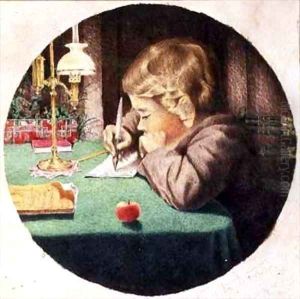Robert B Brandegee Paintings
Robert B Brandegee was an American artist known for his landscape and still life paintings. Born on October 14, 1849, in Berlin, Connecticut, Brandegee developed an interest in art at a young age. He initially studied under Charles Ethan Porter, an African American still life painter, and later continued his education at the prestigious National Academy of Design in New York City.
After his studies in New York, Brandegee sought to further refine his skills and thus traveled to Paris, France, which was then the epicenter of the art world. He studied at the École des Beaux-Arts, one of the most influential art schools in Europe. Here, Brandegee was exposed to the works of the French masters and the burgeoning Impressionist movement, which would have a lasting impact on his style and technique.
Upon returning to the United States, Brandegee settled in New Haven, Connecticut, where he quickly became a fixture in the local art scene. His works were regularly exhibited at the National Academy of Design and the Connecticut Academy of Fine Arts, among other institutions. Brandegee's landscapes often depicted the serene and pastoral scenes of the New England countryside. His works are characterized by a refined use of color and light, which he used to capture the subtle nuances of the natural world.
Brandegee was also known for his still lifes, which were highly detailed and celebrated for their realism. His compositions often featured flowers, which he rendered with delicate brushwork and a vibrant palette. These paintings not only showcased his technical skill but also reflected the influence of his French training.
Throughout his career, Brandegee remained active in the art community, serving as a mentor to younger artists and participating in numerous exhibitions. He was a member of the National Academy of Design and the American Watercolor Society, which reflected his status as a respected artist of his time.
Robert B Brandegee passed away on October 31, 1922. Although he may not be as widely known today as some of his contemporaries, his paintings continue to be appreciated for their beauty and craftsmanship. His works can be found in various art collections and have been featured in exhibitions dedicated to American art of the late 19th and early 20th centuries.
